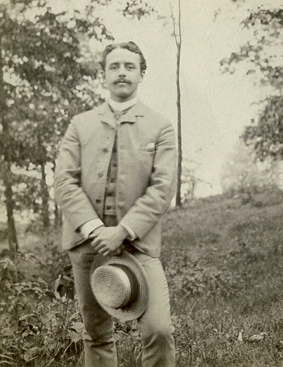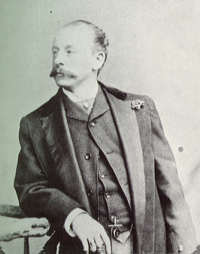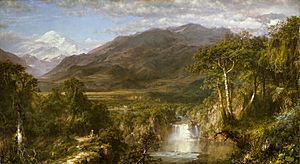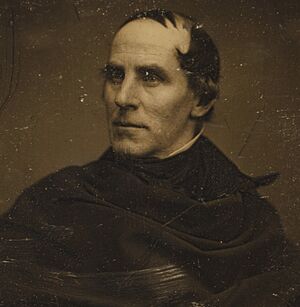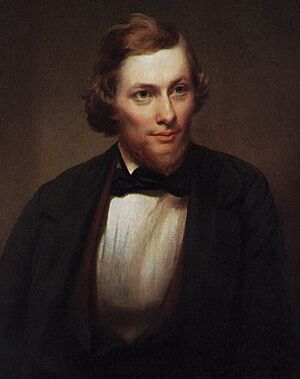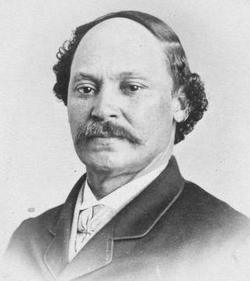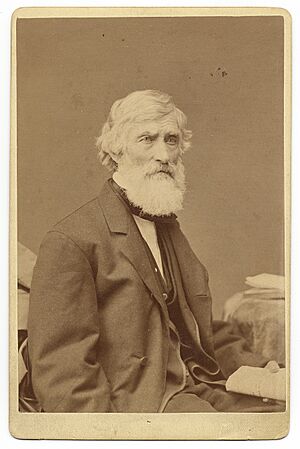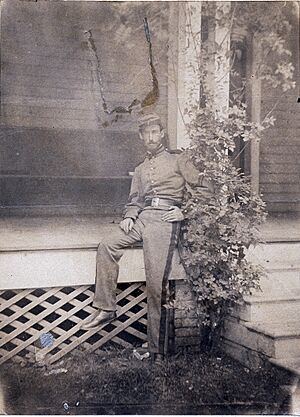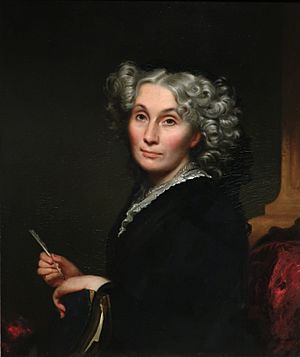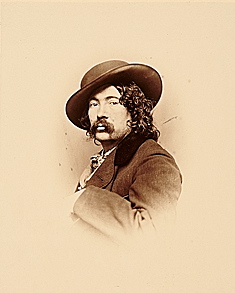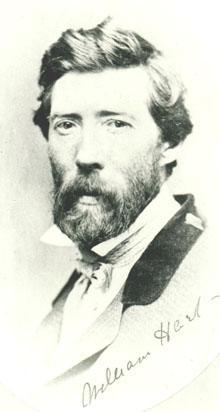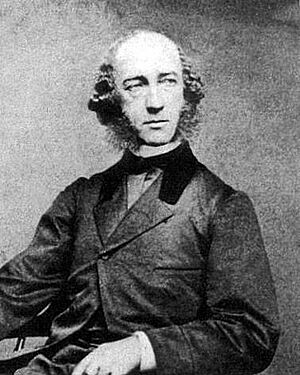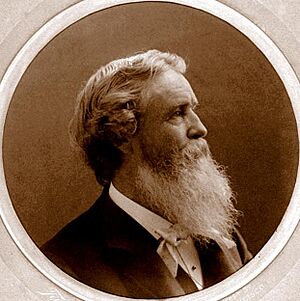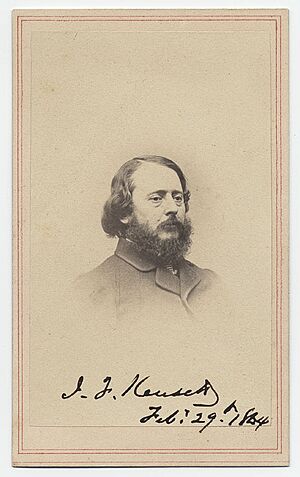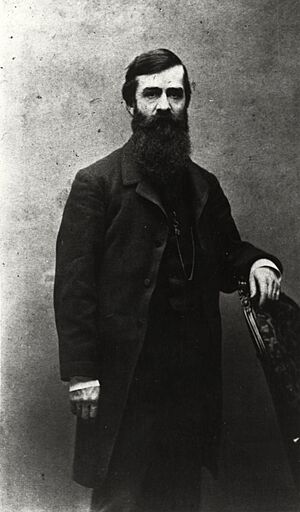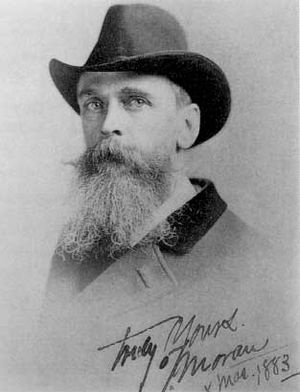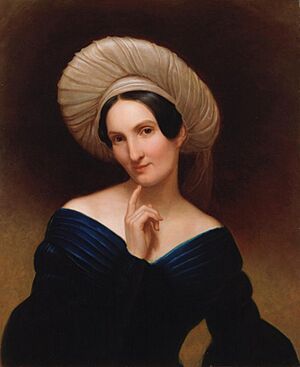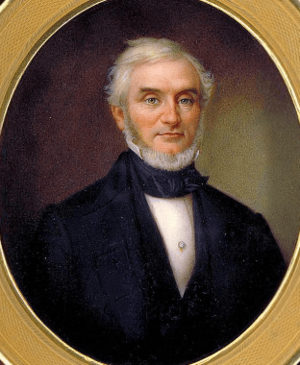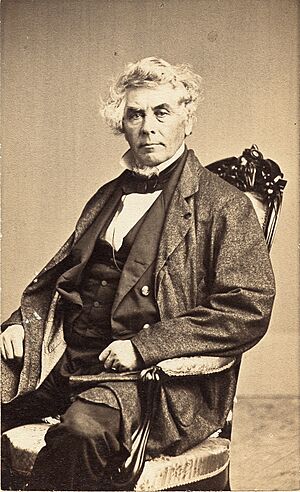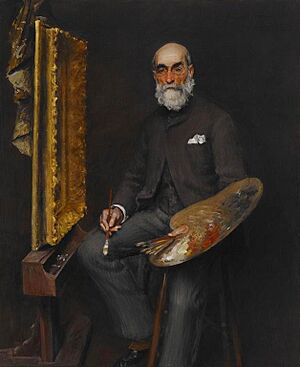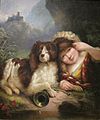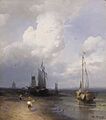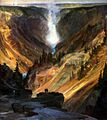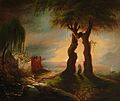List of Hudson River School artists facts for kids
The Hudson River School was a special group of American artists in the mid-1800s. They were mostly landscape painters, meaning they focused on painting nature. Their art was inspired by romanticism, which is an art style that celebrates strong emotions and the beauty of nature.
These artists loved to paint the amazing scenery of the Hudson River Valley in New York. They also painted the beautiful Catskill Mountains, Adirondack Mountains, and the White Mountains in New Hampshire. When we say "school" here, it doesn't mean a place where students go to learn. Instead, it means a group of people who share similar ideas, styles, and inspiration in their work.
Some of these painters were also called Luminists. This was a related art style from the same time. Luminist paintings are known for their focus on light and how it creates a calm, peaceful feeling.
Contents
- Meet the Artists of the Hudson River School
- Charles Baker
- William Bliss Baker
- Susie M. Barstow
- Julie Hart Beers
- Albert Bierstadt
- Alfred Thompson Bricher
- John William Casilear
- Frederic Edwin Church
- Thomas Cole
- Samuel Colman
- Jasper Francis Cropsey
- Thomas Doughty
- Robert S. Duncanson
- Asher Brown Durand
- Alvan Fisher
- Sanford Robinson Gifford
- Eliza Pratt Greatorex
- Daniel Charles Grose
- James McDougal Hart
- William Hart
- William Stanley Haseltine
- Robert Havell, Jr.
- Martin Johnson Heade
- Hermann Ottomar Herzog
- Thomas Hill
- George Inness
- David Johnson
- John Frederick Kensett
- Homer Dodge Martin
- Jervis McEntee
- Mary Blood Mellen
- Charles Herbert Moore
- Thomas Moran
- William Sidney Mount
- Harriet Cany Peale
- William Trost Richards
- Ferdinand Richardt
- Francis Augustus Silva
- James Augustus Suydam
- Jesse Talbot
- William Guy Wall
- Mary Josephine Walters
- Robert Walter Weir
- Worthington Whittredge
- John Williamson
- Images for kids
Meet the Artists of the Hudson River School
Here are some of the talented artists who were part of the Hudson River School. They are listed in alphabetical order by their last name.
Charles Baker
Charles Baker (1839–1888) was an American landscape painter. He created beautiful, peaceful scenes of early American wilderness. He also painted the scenic views of the White Mountains in New Hampshire. Baker showed his art at important places like the National Academy of Design. He was greatly influenced by the dramatic paintings of Thomas Cole. Charles Baker was also one of the people who started the Art Students League of New York.
William Bliss Baker
William Bliss Baker (1859–1886) was an American artist. He started painting as the Hudson River School was becoming less popular. He studied art at the National Academy of Design. His teachers included famous artists like Albert Bierstadt. Baker had studios in Clifton Park, New York, and New York City. He painted with both oils and watercolors. He made over 130 paintings in his short life. Baker died at only 26 years old. The New York Times newspaper said his death meant America lost "one of its most promising artists." His painting Fallen Monarchs is considered his best work.
Susie M. Barstow
Susie M. Barstow (1836–1923) was an enthusiastic hiker. She was also an early member of the Appalachian Mountain Club. Her paintings are known for being full of light. They often show calm and peaceful landscapes.
Julie Hart Beers
Julie Hart Beers (1835–1913) was one of the few women artists in the Hudson River School. She was very successful in selling her art. Her paintings often showed wide, balanced scenes with interesting small details.
Albert Bierstadt
Albert Bierstadt (1830–1902) was a German-American painter. He is famous for his large, detailed paintings of the American West. To find subjects for his art, Bierstadt joined several trips exploring the West. He was not the first artist to paint these places. However, he became the most important painter of these scenes in the late 1800s.
Alfred Thompson Bricher
Alfred Thompson Bricher (1837–1908) was an American artist. He was one of the last painters of the Hudson River School. He was known for studying how light worked. He explored how light reflected, bent, and was absorbed by landscapes and seascapes.
John William Casilear
John William Casilear (1811–1893) was an Engraver. He was encouraged to start painting by his friend Asher Durand.
Frederic Edwin Church
Frederic Edwin Church (1826–1900) was a student of Thomas Cole. He became a very important artist in the Hudson River School. Church is best known for his large, wide landscape paintings. These often showed dramatic natural events. He focused on light and had a romantic respect for nature's details. Later in his life, Church painted European and Middle Eastern cities. He created many of his works at his home, Olana.
Thomas Cole
Thomas Cole (1801–1848) is often called the founder of the Hudson River School. He painted scenes near his home in Catskill, New York.
Samuel Colman
Samuel Colman (1832–1920) was a member of the National Academy of Design. His landscapes show the influence of the Hudson River School. People believe he studied with Asher Durand.
Jasper Francis Cropsey
Jasper Francis Cropsey (1823–1900) was one of the first members of the Hudson River School. He painted autumn landscapes that amazed people with their bold and bright colors. As an artist, he believed that landscapes were the highest form of art. He also thought that nature was a direct sign of God. Cropsey helped start the American Watercolor Society. He was one of the few Hudson River School artists who painted with watercolors.
Thomas Doughty
Thomas Doughty (1793–1856) was the first American artist to work only as a landscape painter. He was successful because of his skill. Also, Americans were becoming more interested in landscape art at that time.
Robert S. Duncanson
Robert S. Duncanson (1821–1872) was an African American artist. He painted before and during the American Civil War. His landscapes were influenced by the Hudson River School.
Asher Brown Durand
Asher Brown Durand (1796–1886) was an engraver who started painting landscapes. He is especially remembered for his detailed paintings of trees, rocks, and leaves. His masterpiece is Kindred Spirits. He also guided and encouraged many younger artists.
Alvan Fisher
Alvan Fisher (1792–1863) was an American artist.
Sanford Robinson Gifford
Sanford Robinson Gifford (1823–1880) was a leading member of the Hudson River School. Gifford's landscapes are known for their focus on light. They also have soft, atmospheric effects. He is considered a practitioner of Luminism. This was a related style to the Hudson River School.
Eliza Pratt Greatorex
Eliza Pratt Greatorex (1819–1897) was an American artist.
Daniel Charles Grose
Daniel Charles Grose (1832–1900) was an English army officer. He moved to the United States around 1867. He drew and painted peaceful landscapes across the Northeast. He especially liked painting in Maine, Connecticut, and the Hudson River Valley.
James McDougal Hart
James McDougal Hart (1828–1901) was a Scottish-born American landscape and cattle painter. He was part of the Hudson River School. His older brother, William Hart, was also a Hudson River School artist. They painted similar subjects. Their sister, Julie Hart Beers, was also a landscape artist in this school.
William Hart
William Hart (1823–1894) was a Scottish-born American landscape and cattle painter. He was a Hudson River School artist. His younger brother, James McDougal Hart, was also a Hudson River School artist. They painted similar subjects.
William Stanley Haseltine
William Stanley Haseltine (1835–1900) was an American painter and draftsman. He was connected with the Hudson River School and Luminism. By 1859, he had a studio in the Tenth Street Studio Building in New York City. This building was a main spot for American landscape painters. Frederic Edwin Church, Albert Bierstadt, and Worthington Whittredge also had studios there. Bierstadt and Whittredge had become friends with Haseltine in Europe.
Robert Havell, Jr.
Robert Havell, Jr. (1793–1878) was an English engraver and painter. He is best known for his detailed prints of birds, especially for John James Audubon's The Birds of America. He later moved to the United States and painted landscapes, including scenes of the Hudson River.
Martin Johnson Heade
Martin Johnson Heade (1819–1904) was a very productive artist. He painted many different subjects, including landscapes. People have different ideas about whether Heade was truly part of the Hudson River School. However, he was friends with many of its most important members, like Church.
Hermann Ottomar Herzog
Hermann Ottomar Herzog (1831–1932) was a German landscape painter. He moved to Pennsylvania and painted scenes across the United States. He is considered part of the Hudson River School. However, he usually painted more realistic scenes, less dramatic than those by Bierstadt or Church.
Thomas Hill
Thomas Hill (1829–1908) was born in England. He moved to the United States when he was 15. He created many beautiful paintings of the California landscape, especially of the Yosemite Valley. He also painted the White Mountains of New Hampshire.
George Inness
George Inness (1825–1894) was an American landscape painter.
David Johnson
David Johnson (1827–1908) was born in New York City. He studied art at the National Academy of Design. He also briefly studied with Jasper Francis Cropsey. Along with John Frederick Kensett and John William Casilear, he was known for developing Luminism.
John Frederick Kensett
John Frederick Kensett (1816–1872) is best known for his landscapes of upstate New York and New England. He also painted seascapes of the coasts of New Jersey, Long Island, and New England.
Homer Dodge Martin
Homer Dodge Martin (1836–1897) was an American landscape painter.
Jervis McEntee
Jervis McEntee (1828–1891) was an American painter of the Hudson River School. He is not as widely known as some others. However, he was a close friend and travel companion to several important Hudson River School artists.
Mary Blood Mellen
Mary Blood Mellen (1819–1886) studied with Fitz Henry Lane. She developed a luminist style for her landscapes and paintings of the sea.
Charles Herbert Moore
Charles Herbert Moore (1840–1930) is considered a less famous member of the Hudson River School. He later started painting in the Pre-Raphaelite style. He then became the first art professor at Harvard University. He was also the first director of the university's Fogg Art Museum. Moore was one of the few watercolor painters in the Hudson River School. He was an early member of the American Watercolor Society.
Thomas Moran
Thomas Moran (1837–1926) was an artist of the Hudson River School. Thomas Moran's paintings of the Western landscape were very important. They helped lead to the creation of Yellowstone National Park. His sketches and paintings captured the grand beauty of the Yellowstone region. They also showed its amazing landforms and natural features.
William Sidney Mount
William Sidney Mount (1807–1868) was an American painter.
Harriet Cany Peale
Harriet Cany Peale (1799–1869) was an American painter.
William Trost Richards
William Trost Richards (1833–1905) was an American landscape artist.
Ferdinand Richardt
Ferdinand Richardt (1819–1895) was a Danish-American artist known for his landscape paintings.
Francis Augustus Silva
Francis Augustus Silva (1835–1886) was an American painter.
James Augustus Suydam
James Augustus Suydam (1819–1865) was an American painter.
Jesse Talbot
Jesse Talbot (1805–1879) was an associate member of the National Academy of Design. He was also a friend of the poet Walt Whitman. Talbot worked for Christian organizations in New York City before becoming a professional artist. His work was often compared favorably to that of Thomas Cole.
William Guy Wall
William Guy Wall (1792–1864) was an Irish-American painter.
Mary Josephine Walters
Mary Josephine Walters (1837–1883) was an American painter.
Robert Walter Weir
Robert Walter Weir (1803–1889) was elected to the National Academy of Design in 1829. He was an American artist connected with the Hudson River School. He was also an instructor at the United States Military Academy for 42 years.
Worthington Whittredge
Worthington Whittredge (1820–1910) was an American artist of the Hudson River School. He was a highly respected artist in his time. He was friends with several leading Hudson River School artists, including Albert Bierstadt and Sanford Robinson Gifford. He traveled widely and was excellent at landscape painting. Many of his paintings are now in major museums. He served as president of the National Academy of Design from 1874 to 1875.
John Williamson
John Williamson (1826–1885) was a Scottish-American painter.
Images for kids


